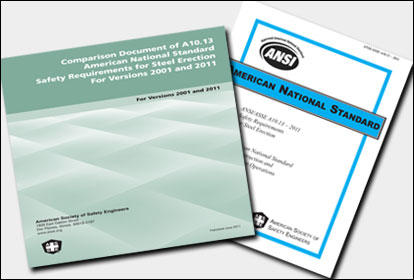OSHA offers guidance document for preventing falls in residential construction (6/28)
OSHA’s fall protection directive guidance document is designed to help employers prevent fall-related injuries and fatalities among workers engaged in residential construction activities, such as roofing.
Falls are the leading cause of work-related deaths among residential construction workers.
This document is intended to help employers with their compliance efforts. It provides information on various work methods that may be used at different stages of the residential construction process.
Under 29 CFR 1926.501(b)(13), workers engaged in residential construction six (6) feet or more above lower levels must be protected by conventional fall protection (in other words, guardrail systems, safety net systems, or personal fall arrest systems) or other fall protection measures allowed elsewhere in 1926.501(b). (Although the standard does not mention personal fall restraint systems, OSHA will accept a properly utilized fall restraint system in lieu of a personal fall arrest system when the restraint system is rigged in such a way that the worker cannot get to the fall hazard.) If an employer can demonstrate that the fall protection required under 1926.501(b)(13) is infeasible or presents a greater hazard, it must instead implement a written fall protection plan meeting the requirements of 1926.502(k).
Fall protection used to comply with 1926.501(b)(13), including guardrail systems, safety net systems, and personal fall arrest systems, must meet and be used in accordance with applicable requirements in 1926.502. Requirements for work performed on scaffolds, ladders, and aerial lifts are in Part 1926 – Subpart L, Subpart X, and 1926.453, respectively.
State plans may also have additional requirements. For further information on state plan standards, please visit: www.osha.gov.
Falls are the leading cause of work-related deaths among residential construction workers.
This document is intended to help employers with their compliance efforts. It provides information on various work methods that may be used at different stages of the residential construction process.
Under 29 CFR 1926.501(b)(13), workers engaged in residential construction six (6) feet or more above lower levels must be protected by conventional fall protection (in other words, guardrail systems, safety net systems, or personal fall arrest systems) or other fall protection measures allowed elsewhere in 1926.501(b). (Although the standard does not mention personal fall restraint systems, OSHA will accept a properly utilized fall restraint system in lieu of a personal fall arrest system when the restraint system is rigged in such a way that the worker cannot get to the fall hazard.) If an employer can demonstrate that the fall protection required under 1926.501(b)(13) is infeasible or presents a greater hazard, it must instead implement a written fall protection plan meeting the requirements of 1926.502(k).
Fall protection used to comply with 1926.501(b)(13), including guardrail systems, safety net systems, and personal fall arrest systems, must meet and be used in accordance with applicable requirements in 1926.502. Requirements for work performed on scaffolds, ladders, and aerial lifts are in Part 1926 – Subpart L, Subpart X, and 1926.453, respectively.
State plans may also have additional requirements. For further information on state plan standards, please visit: www.osha.gov.
Looking for a reprint of this article?
From high-res PDFs to custom plaques, order your copy today!




